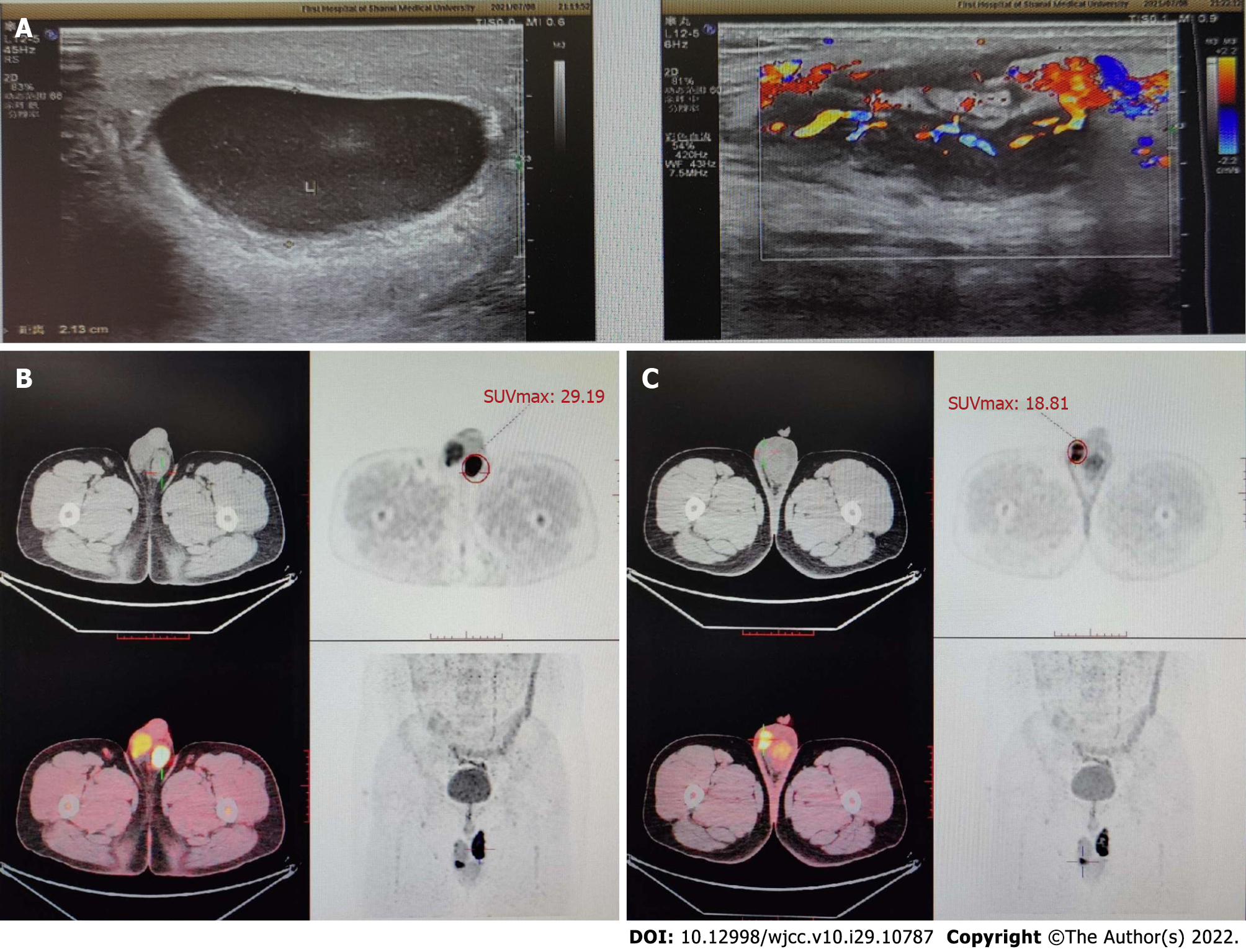Copyright
©The Author(s) 2022.
World J Clin Cases. Oct 16, 2022; 10(29): 10787-10793
Published online Oct 16, 2022. doi: 10.12998/wjcc.v10.i29.10787
Published online Oct 16, 2022. doi: 10.12998/wjcc.v10.i29.10787
Figure 1 Histopathological analysis of the resected specimen.
A and B: The left scrotum. Spermatic cord mass is consistent with granulomatous lesion with little necrosis. Macrophages can be seen to engulf degraded sperm (arrow), considered as sperm granuloma. The incisal margin did not change significantly. There was no significant change in testis and epididymis; C and D: The right epididymis was infiltrated with lymphocytes, mononuclear cells and eosinophils. The formation of an epithelioid granuloma was found in the epididymis along with multinucleated giant cells, including foreign body giant cells and Langhans giant cells. Coagulative necrosis was found in some areas along with complete necrosis of small focus which is consistent with granulomatous lesions. HE: Hematoxylin-eosin staining.
Figure 2 Imaging examinations.
A: Color Doppler ultrasound images of the scrotum. There were semi-swirl-like changes in the structure of the left spermatic cord and the echo decreased and was uneven; there was no obvious blood flow signal in the spermatic vein and the blood flow in the artery was filled well; B: Positron emission tomography, the metabolism of the soft tissue nodules of the spermatic vein in the left scrotum increased with a delayed maximum standardized uptake value (SUVmax) of 29.19; C: Computed tomography images of the scrotum, the focal metabolism in the right epididymis increased with a delayed SUVmax of 18.81.
Figure 3 Photograph of the scrotal mass.
A: The left testis (orange arrow); B: The left spermatic cord mass (white arrow); C: The mass in the tail of the right epididymis. The size of the syringe is 20 mL.
- Citation: Lv DY, Xie HJ, Cui F, Zhou HY, Shuang WB. Bilateral occurrence of sperm granulomas in the left spermatic cord and on the right epididymis: A case report. World J Clin Cases 2022; 10(29): 10787-10793
- URL: https://www.wjgnet.com/2307-8960/full/v10/i29/10787.htm
- DOI: https://dx.doi.org/10.12998/wjcc.v10.i29.10787











